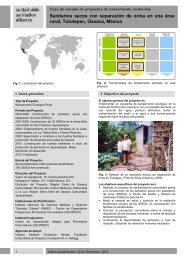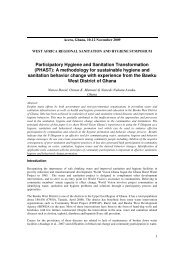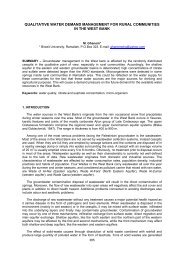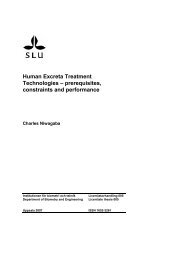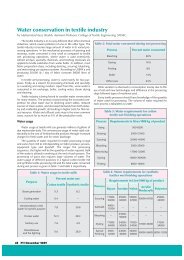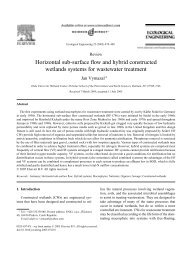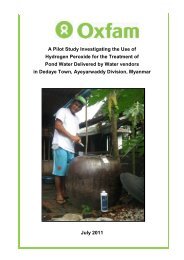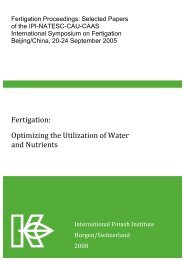The Incinerator Guidebook: A Practical Guide for Selecting ... - SSWM
The Incinerator Guidebook: A Practical Guide for Selecting ... - SSWM
The Incinerator Guidebook: A Practical Guide for Selecting ... - SSWM
You also want an ePaper? Increase the reach of your titles
YUMPU automatically turns print PDFs into web optimized ePapers that Google loves.
X. Additional Resources<br />
PATH<br />
http://www.path.org/projects/health_care_waste_resources.php#technical<br />
PATH has gathered available resources on HCWM to provide easy access to the in<strong>for</strong>mation. This<br />
web page is intended to serve as a resource <strong>for</strong> countries and programs working to improve<br />
HCWM. Included in these resources are some essential pieces of in<strong>for</strong>mation <strong>for</strong> planning and<br />
decision-making.<br />
Health Care Without Harm<br />
www.noharm.org<br />
Health Care Without Harm is an international coalition of 473 organizations in more than 50<br />
countries working to trans<strong>for</strong>m the health care sector so it is no longer a source of harm to people<br />
and the environment.<br />
Making Medical Injections Safer Project<br />
http://mmis.jsi.com<br />
<strong>The</strong> Making Medical Injections Safer (MMIS) project was a five-year initiative funded by the<br />
President’s Emergency Plan <strong>for</strong> AIDS Relief (PEPFAR) through the United States Agency <strong>for</strong><br />
International Development (USAID) and the Centers <strong>for</strong> Disease Control and Prevention (CDC).<br />
MMIS was implemented by John Snow Inc. in collaboration with PATH, Academy <strong>for</strong> Educational<br />
Development (AED), and the Manoff Group. <strong>The</strong> goal of the MMIS project was to establish an<br />
environment where patients, health care workers, and the community are better protected from the<br />
medical transmission of human immunodeficiency virus (HIV) and other bloodborne pathogens by<br />
project close (2009).<br />
Safe Injection Global Network Alliance<br />
http://www.who.int/injection_safety/sign/en/<br />
<strong>The</strong> Safe Injection Global Network (SIGN) Alliance is coordinated through the World Health<br />
Organization (WHO). SIGN is a voluntary coalition of stakeholders aiming to achieve safe and<br />
appropriate use of injections throughout the world.<br />
Technical Network <strong>for</strong> Strengthening Immunization Services<br />
http://www.technet21.org/index.htm<br />
Technical Network <strong>for</strong> Strengthening Immunization Services (TechNet21) is a professional network<br />
of experts in logistics who are involved in the management of immunization and other primary<br />
health care operations at the country and international levels. It serves as a <strong>for</strong>um where issues<br />
relevant to implementation of immunization services can be discussed, debated, and clarified. <strong>The</strong><br />
<strong>for</strong>um is maintained by WHO.<br />
WHO Health Care Waste Management Resource<br />
http://healthcarewaste.org/en/115_overview.html<br />
This website is managed by WHO. It is a resource <strong>for</strong> policy, planning, and management of health<br />
care waste and includes a number of databases that can be searched <strong>for</strong> technical reference material.<br />
27



